They say that ‘beauty is timeless’ but beauty trends change with every year and season. A brochure for Elizabeth Arden cosmetics on display in ‘Printing a Modern World’. Commercial graphics of the 1930s’ (Gallery 102 – until 19 August 2018), illustrates the transformation of women’s style and status between the wars.
Wearing make-up became more acceptable in the early 20th century. The influence of Hollywood actresses gave women more confidence to use cosmetics as they sought to emulate the look of screen goddesses like Marlene Dietrich and Greta Garbo. Women became more visible in society as they entered workplaces in greater numbers after the first world war. Make-up, once the sign of a disreputable woman, was used by professional and higher-class ladies to present their best face to society.
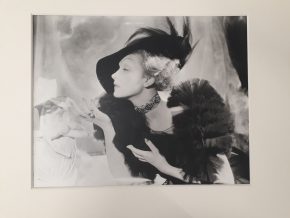
Elizabeth Arden was founded in America in 1910. The cosmetics company flourished in the 1920s, despite the Depression. By the 1930s, it was one of several major make-up brands advertising a wide range of cosmetics, along with Max Factor, and Arden’s main rival Helena Rubenstein.
Elizabeth Arden was an astute business woman, opening beauty salons where women could be prettified and pampered. By the 1930s, salons contained fitness studios, buying into the Modernist trend for exercise and well-being. The modern look is also expressed in the metallic silver background and pink stars on the cover of the brochure. This reflects the decor of Arden’s New York salon which was described by Fortune Magazine as a “combination of hard-edged industrial forms and ‘ultra-feminine’ pastels”.
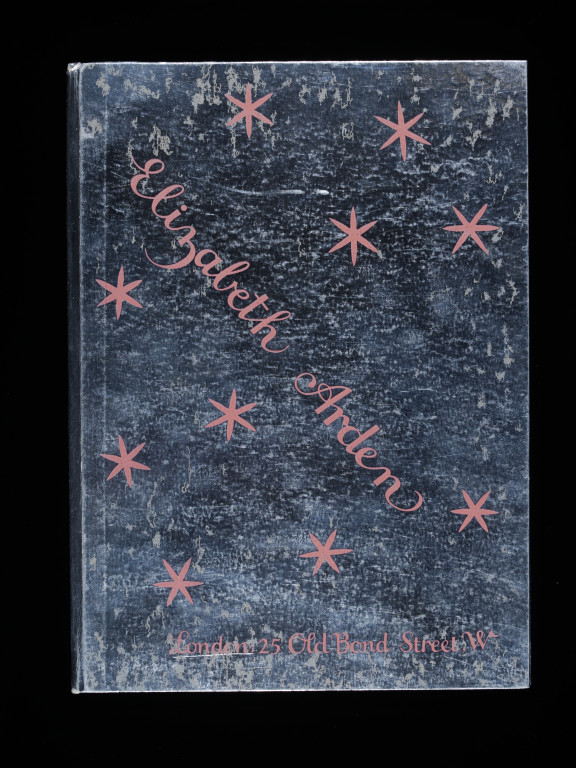
Lipstick was a central element of Elizabeth Arden’s make-up look. She distributed red lipstick to Suffragettes to show support for their cause, and later to women serving in the military during WWII. The 1920s small rosebud-shaped lip had given way to the 1930’s more natural lip shape, in a range of colours. The lipsticks in our brochure feature strong reds, as well as lighter, more neutral tints.
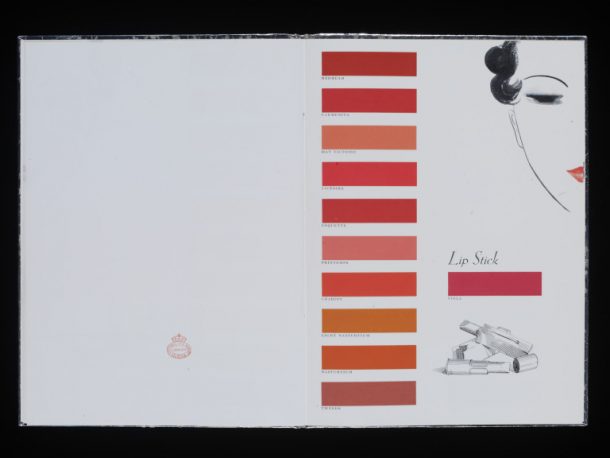
London : Elizabeth Arden, 1930s. Museum number:
38041800554941
In the image above you can see another trend of 1930s beauty – pencil thin eyebrows. These were plucked to leave an extremely thin line, or removed entirely and penciled in.
The 1930s look was much lighter and more natural than the vampy 1920s style, especially around the eyes. Gone were the dramatic, dark, kohl-rimmed eyes sported by silent movie stars; and in were a range of colours applied over and just beyond the lid. The palette of the period – blues, greens, and even shimmery golds and silvers – are seen in our brochure.
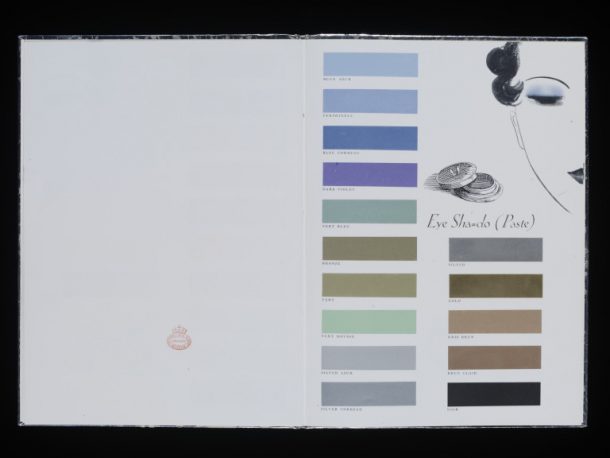
London : Elizabeth Arden, 1930s. Museum number:
38041800554941
Rouge also became more understated, moving away from the pale skin and rouge-rounded cheeks of the flappers. Rouge was used to give a subtle contour and blush to give the face a fresh, blooming appearance. This again reflects the 1930s interest in well-being and health. A tanned look began to creep in under the influence of Coco Chanel.
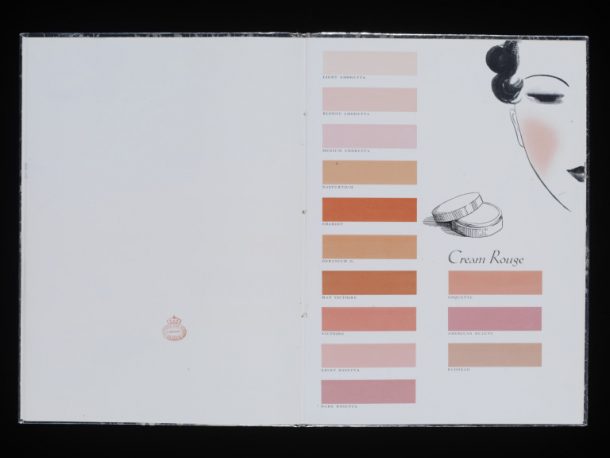
London : Elizabeth Arden, 1930s. Museum number:
38041800554941
Since the 1920s, mascara has been an important weapon in a woman’s cosmetic arsenal; used to intensify and highlight the eyes. At this time mascara came in a bar with a brush, as seen in this page of our brochure. It wasn’t until the 1950s that liquid mascara appeared. The mascara here is in a range of colours for a more creative and colourful flutter of lashes.
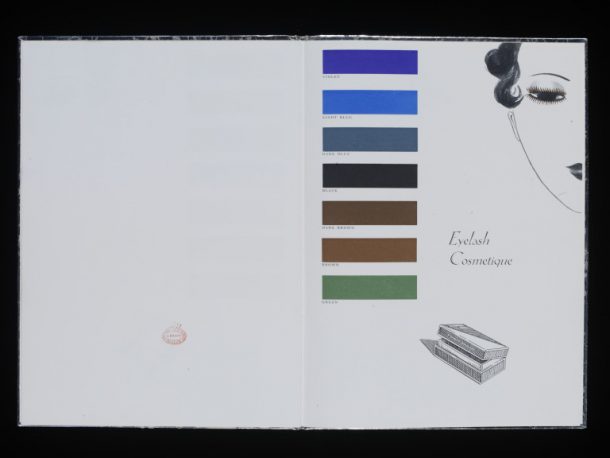
London : Elizabeth Arden, 1930s. Museum number:
38041800554941
As outlined in this page, nail polish would match the colours of the make-up on your face. Unusually for the time, the whole nail is painted rather than the popular moon manicure where either the tip or moon of the nail or both were not painted.
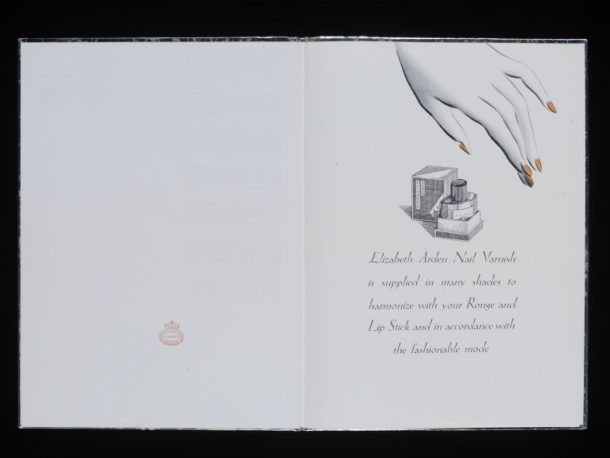
London : Elizabeth Arden, 1930s. Museum number:
38041800554941
This elegant luxury catalogue shows how women were now valued consumers of products that were intended to make them feel beautiful and empowered. Having gained the vote and entered many more workplaces, women were becoming more visible and confident in the changing world of the early 20th century.


